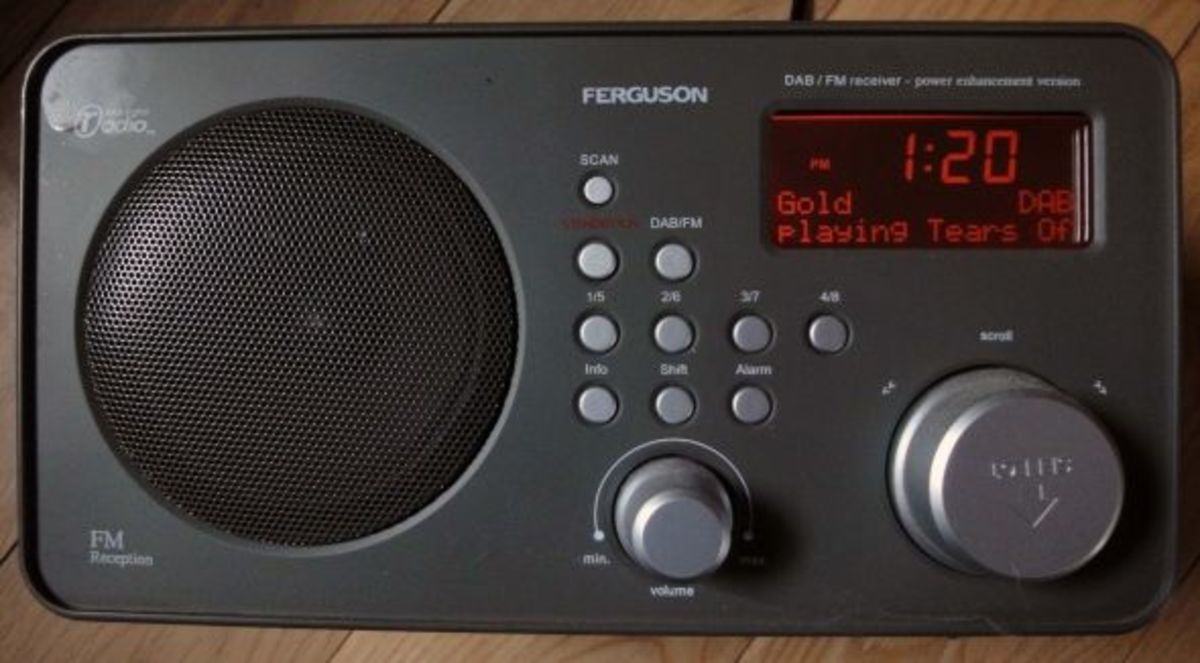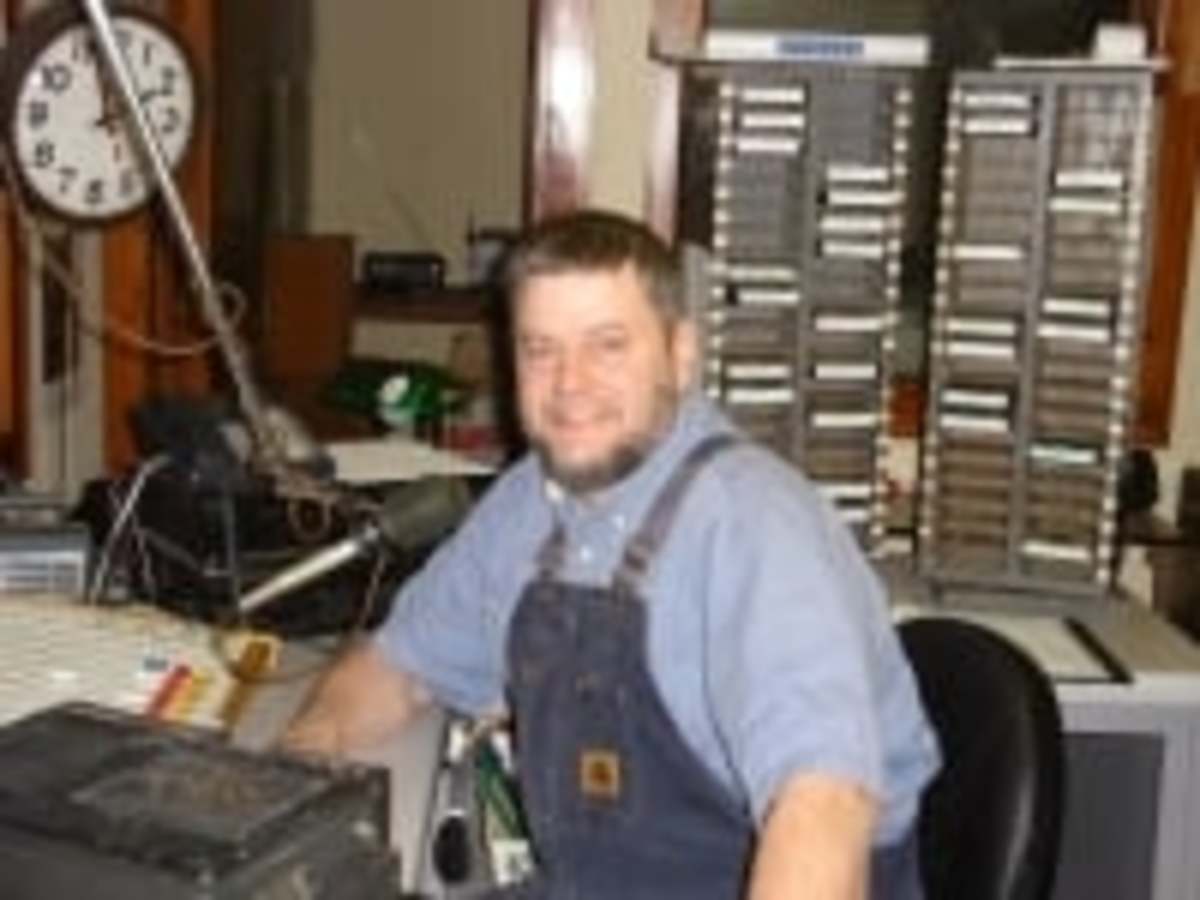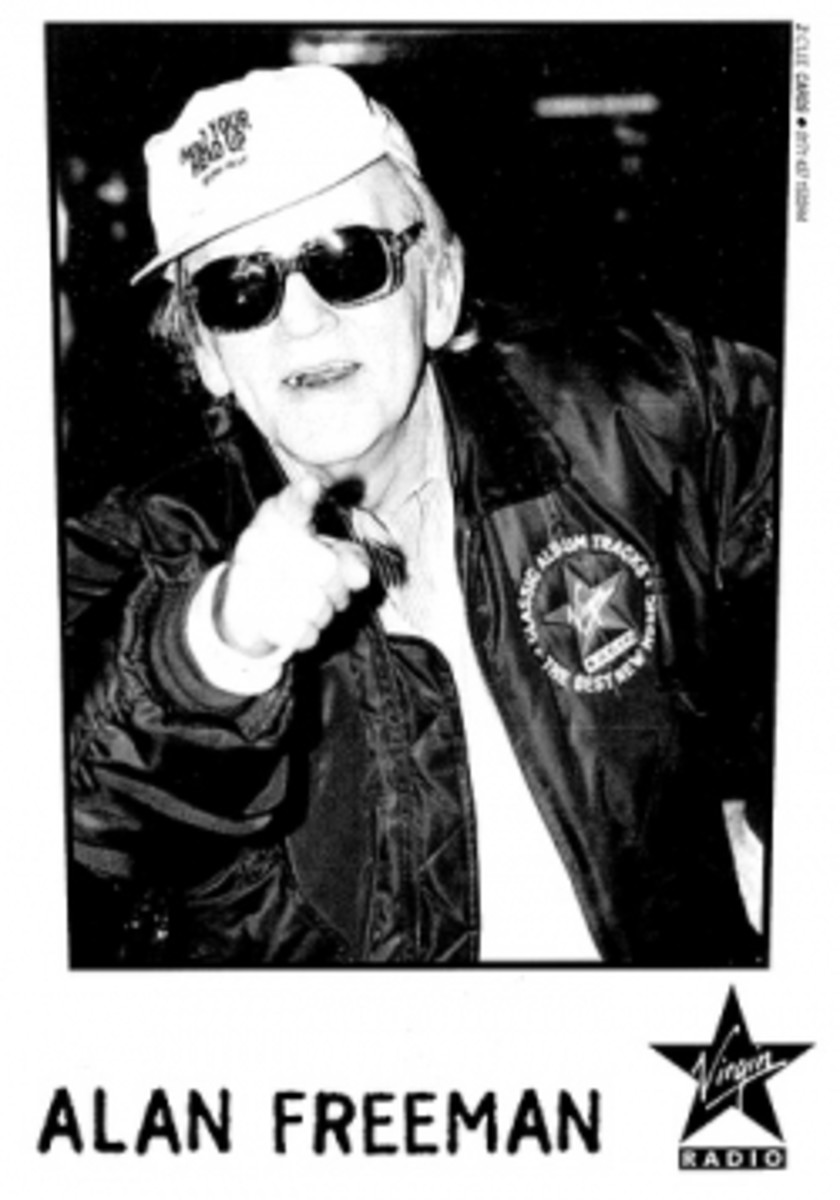How to Make a Good Podcast / Radio Show
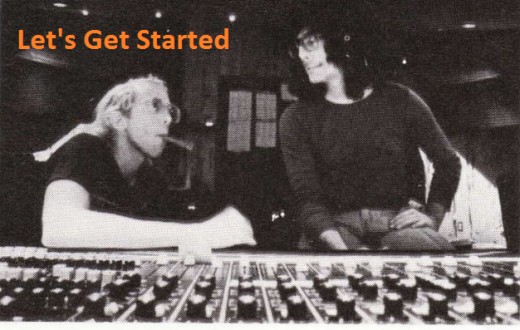
Don't Worry - I Got This
Let me start by easing your mind :
I've been in radio. == >
I produced my own show for two years. I've edited video content so it makes sense audio-only. I've broadcasted on location beyond the studio; and I've done talk-only and music-only content. So while I can't hold a candle to most career DJs or the CBC - I could probably hold my own against NPR.
This article is about the tips and tricks you can use to improve the quality of your podcast or radio show, including free software to help make it happen.
The great thing about radio, the reason its survived and evolved alongside other media, is that it remains a very personal form of media. "Radio is a voice in your ear," the saying goes. It leaves room for your mind to visualize, imagine and engage with the content in a way that video cannot - precisely because good visual media enraptures the audience and does the mental lifting for you instead.
For the purpose of this article we will treat 'radio' as Live, On-Air and 'podcast' as pre-recorded. Though everything here will apply to both forms.

This Article Will Cover :
- The Voice
- The Landscape
- Clean Sound
- Audio Technique
The Strong Voice
Whether or not you modulate your voice's pitch, replace it with the robotic text-to-speech Ivona, slow it down to Barry White or speed it up Alvin and the Chipmunks - there are some hallmarks of good speech in radio that technology can't tweak.
The Ums and Ahs ( dibs on the band name )
Where I worked we called these 'verbal tics:' every pause, hum and haw that comes out of your mouth will be noticed on-air. It's an interesting quirk; when we talk to one another in person these verbal tics go largely unnoticed. There's a face to focus on, filling the gaps in communication and adding context to our speech. In radio/podcasting we don't have this benefit - and failing to take notice will make a train-wreck of your show.
Without a bit of 'speech therapy' your audience will feel like they're in a stick-shift car with a first time driver: stop go stop go stop go - and you'll sound foolish even if you're an expert in the topic being discussed.
The best way to take care of verbal tics is through 'sound-checking.' This is the practice of recording your show as it broadcasts, then, once your show is complete or you're done on-air for the day, take a seat and listen to the whole thing.
If you're new to this, I'm sure you'll be aghast at how often your voice stutters and murmurs, how sharp your 'S's sound in the microphone or how quickly your own lip-smacking gets on your nerves. These are the verbal tics, and the best way to get rid of them is to sound-check after each show. It's 'practice practice practice.' You will find that over the course of a few months, your attentiveness will be enough to erase these patterns from your speech.
Technically you could (in a podcast) manually edit all these tics out of the file; but the time it takes to do so will take at least x3 longer than the length of your program - and your speech won't improve as a result. Eliminating these tics adds confidence to your voice and helps you pace your voice so that the audience can keep up.
Having better diction will also make your guests and interviewees less nervous with their own speech, will make for better dialog all around.
Pacing
The other thing you'll notice immediately is that you are talking too fast in your show. (I've yet to hear a newbie talk too slow unless they were both drunk and high at the same time.)
Pacing is usually a matter of nervousness and learning to calm yourself down, consciously slowing your speech to about 150-160 words per minute (wpm.) For reference, an auctioneer speaks at around 250 wpm.
If you have trouble interpreting whether your voice is too fast (eg. you know the script so the speech is easier for you to follow,) there's a simple work-around: grab a 150 word text from the internet and a stopwatch. If you finish before a minute is up - you need to slow down.
Holding Attention
Finally, whether through editing, scripting, or a bit of forethought - there's the matter of holding your audience's attention by keeping to the strong points of your topic and not meandering too much. Of course, this depends on the theme of your show and the people you're trying to reach, but it needs to be tailored either way.
Eg. My friend Kyran had a late night show that extended into the unregulated hours of the night. Freestyle rap, political and philosophical discussion, sex talk, and lots of good music. With an average of three to five guests each night and a two hour slot - Kyran had to work hard to keep the talking parts of the show in good form. Not an easy feat when there's young minds afoot on such florid topics as the meaning of revolution.
The solution? Kyran and his guests instituted a policy - whereby each person would read some agreed upon articles/texts in advance. This way they could each formulate and articulate their opinions before the pressure of being on-air muddled their words. The additional time for contemplation had an immediate impact on the quality of the show and kept the audience stimulated.

Soundscape
In film, there are dozens of tricks and techniques a person can use beyond what's in front of the camera in order to tell the story.
For example: 'Jump-cutting' when a scene moves rapidly but has the camera in very similar/close angles - is used to convey urgency or panic.
Or the more common: '360 degree' (camera circles person,) which is used either when a character is surveying the world around them (circles slowly) or confused by the environment (circles quickly.) The slow movement lets you, too, take in what's going on. Whereas fast movement makes you as nauseous as the character - such is the power of framing what we see.
As in film - so in radio.
Since radio leaves much to the imagination, each show generates a landscape of sorts for the listeners. Kyran's show for example, might make the audience feel as if they're in a student's apartment, or the basement of a guerrilla outpost in the Lacandon.
My own show sought to create at times the warm atmosphere of a morning coffee shop, a futuristic dystopian cubicle, and even 'liminal space' (the old world is gone, but the new world isn't here yet [ie. purgatory.])
Whether you do something about it or not - the audience is going to manufacture a soundscape out of your show, and it will impact how they feel about it -and- listen to you; so unless you're feeling experimental, make sure you have an active hand in shaping this landscape.
Music, backdrops and interludes.
Even podcasts that are primarily 'talk radio' will colour themselves with a bit of music in order to help set the scene and pace for the listener. They'll also have important signifiers that the audience uses to orientate themselves. Most shows will include :
- Intro and Outro music
- Short (10-30 second) musical interludes
- Set times for any promotion, marketing
- Set times for re-capping the topic, date, day's guests, hosts etc.
The introduction will have either the same music OR a verbal piece that opens similarly to every other show in the series. If the topic varies - than the verbal intro stays mostly the same so that the music can set the tone. If the topic is consistent, than the verbal part may change more often with the music staying the same.
The reason for this is to give the audience the feeling of 'returning' to the space they were at when the last listened - providing continuity to the radio program or podcast.
Interludes are exactly as they sound. Much like chapters in a book, interludes are used to transition to new topics (or genres of music) within the same show; it helps the listener 'book-end' each portion of the show. If you have heavy metal the first hour, and then classical adaptions of heavy metal music in the second hour, interludes will clarify this shift and stop the sound-scape from clashing with itself. ie. your bathroom is not also your kitchen - show your audience that you're leaving one room and entering another.
Interludes are almost always non-verbal; a bit of brief, simple music to bring us back to baseline for the next set of ups-and-downs. Speech is avoided since it can mask the interlude and subvert its purpose.
Set times for promotions.
The standard is usually to promote at the opening of the show, and then every half-hour thereafter.
Re-Cap for the audience.
The standard for re-cap is a brief reminder of what's going on every fifteen minutes, with a full re-cap of what's happened so far every half-hour. It's important to note that both podcasts and live radio programs use this practice.
Summing up the show-so-far keeps the clutter down in the listener's head; important for info heavy shows. You may mention the guests and hosts at the beginning - but what if your audience doesn't care who they are until they've listened for 40 minutes? We re-cap in-show so that the listener can judge for themselves if things are on course.
Finally, there's the fact that many internet podcasts go on to become syndicated shows on FM radio, so structuring them with these standards in mind will prepare you for a world without pause buttons.

Clean Sound
You Can't Fix Bad Sound.
It's like that laughable scene where a team of crime investigators hover around a computer. "Look, there's a license plate! ZOOM! ENHANCE!" The picture magnifies x100 crystal clear. "Got him! Case closed!"
Whiskey for everyone.
What happens when you blow up an image on your non-magical computer? It gets grainy and indecipherable. It's the same with sound. The quality of the recording can only be as good as when it was initially captured - with few exceptions. 'We'll fix it in Post' says the producer - while the sound editor moans and contemplates suicide. He knows it's difficult to fix or clean up - so here's some tips to get it right the first time.
- Don't use compressed files... and if you do, don't let them be below 128kbs (kilobytes per second.) Most DJs and artists record in .WAV or other uncompressed formats. Compression degrades the quality of the sound by turning the file into a smaller formula that regurgitates the audio - and it will subtract from the show.
- Listen as you record. Semi-professionalism dictates that you should have a head-phone on one ear to hear what the microphone is picking up. The airplane flying overhead might sound distant in real life but turn out to be magnified and distracting in the audio file - so screen your sound as you're recording it to make sure you get a clean piece.
- Over-Emphasize. To really get your speech to pop, exaggerate the shapes your mouth makes in speaking. Remember that the audience doesn't have a face to clarify what's being said - so hamming it up a bit will give your voice the extra distinction that your pretty mug can't provide over the airwaves.
- Sock and Coat-hanger. The two hardest - and most annoying - sounds to avoid in recording voice is the loud 'pop' of 'P' and the hissing of 'S.' Radio stations tackle this by placing a small mesh between the host's mouth and the microphone - but you can accomplish the same effect with a well-twisted coat-hanger and a sacrificial sock in the same fashion.
- Check the Wires. Like the airplane overhead, sometimes the most innocuous and sneaky sounds creep their way into the file. Poor contacts on the mic, for example, can cause an ugly 'frapping' sound - so be sure your mics are fixed and won't move for the duration of the recording.
- High Notes and Low Hums. Here's an example you might be familiar with: The Fridge. If you've ever shoe-stringed an operation you know it can find its way in to the recording, ditto with the buzz of fluorescent lights. Fans, Air Conditioners, computers, any steady noise can weasel its way in. If you're lucky - these noises will be the highest or lowest pitched of the recording, which means you can snip them out while editing.
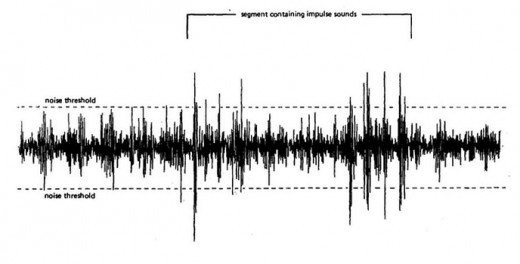
Editing Technique
The last hurdle for the amateur-at-work is editing - either to compose a podcast or to prepare clips and music for on-air. There's a deluge of free software for audio work, so much so that piracy is more or less redundant.
- Audacity (free) and Wavepad (paid) are my go-to programs to arrange the sound file and use basic editing techniques.
- For voice modulation I use Celemony.
- And for license free sound effects/clips I go to The Free Sound Project.
- Finally, if I need to grab clips of sound from video footage, such as newsfeed or documentaries, I'll use Download Helper for Firefox to pull video as an .mp4 directly off of youtube.
Once you have all your recordings in one place, it's time to put them all together. Doing so is more or less intuitive, so let's focus on how to get it all flowing properly instead.
Fade In / Fade Out. A simple hallmark we'll all recognize, be sure your sound clips fade appropriately - unless you have some other deliberate effect in mind.
Amplifying / Reducing. This is sometimes over-looked, but your listening audience doesn't want to fiddle their own volume dial to listen to your show. You'll need to adjust the volume of all your dialog to -12dB (decibels,) and adjust the music accordingly (if it's rock, make it a bit higher etc.) -12dB is the standard and will help with propagating your show beyond whichever station or website it's hosted on.
Adjusting the sound is done by finding the loudest 'peak' of each clip and then tweaking the volume of the whole clip so that only the peak hits the -12dB cap.
Music Backdrops. One of my favourite thematic effects in radio is back-dropping voices with music to set the tone; and one of the most common errors is to underestimate how loud the backdrop music should be. Put it at 1/4 or 1/3 the volume of the voice it's hiding behind. If you're playing it by ear: find the point where it sounds quiet enough to you - then cut it in half again.
Removing Clicks. Despite all your best efforts, you'll likely have sharp peaks or clicks in the sound; rather than removing them with click/pop filters or silence, use slight cross-fading to mask the sound.
Uncomfortable Silence. Fortunately a waveform makes silence easy to see and selectively shorten - it'll go a long way to ensuring the dialog in your show flows continuously.


